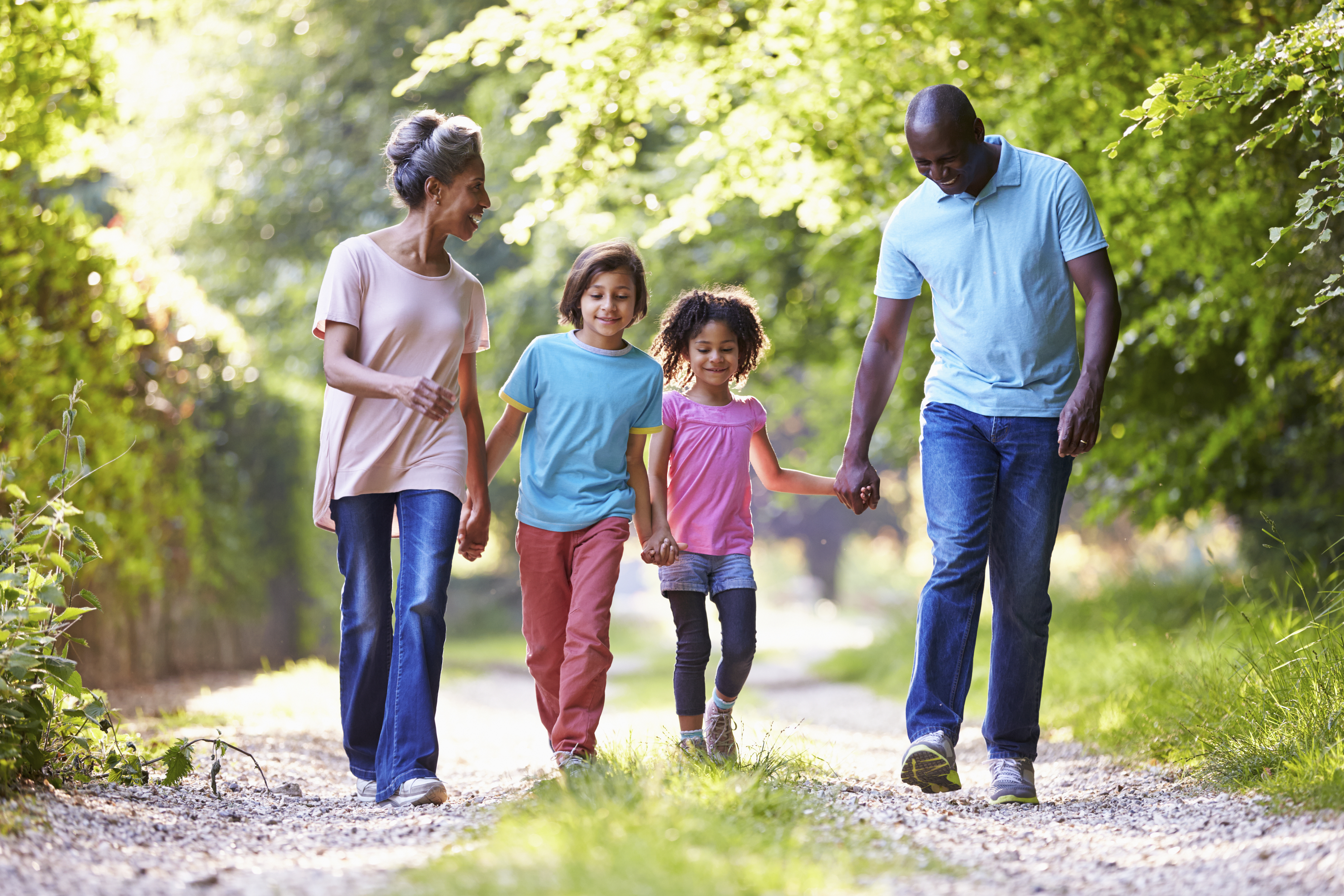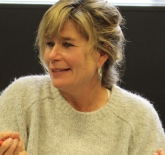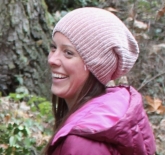Teaching Remote Physical and Health Education Overnight

Previously published in Volume 86, Issue 3
Abstract
The global pandemic, COVID-19, has impacted many aspects of life, including learning and teaching in Physical and Health Education (PHE). Whereas some teachers may struggle to engage students in PHE as traditional venues (gyms and fields) for sport and physical activity are limited, other PHE teachers have found creative solutions for providing meaningful PHE experiences for their students. These experiences not only encourage students to be active, but also to connect to others, interact with nature and give back to their community. This article provides specific activity examples that two high school PHE teachers are providing their students through virtual means to actively engage them in their own learning in PHE.
Introduction
As with almost all aspects of our lives, the limitations brought on by the COVID-19 global pandemic, forced teaching and learning in Physical and Health Education (PHE) to change quickly and dramatically. Almost overnight, PHE went from students and teachers interacting in gymnasiums and on playing fields, to students and teachers alike communicating from their respective homes. Schools across Canada were suddenly closed, students were unexpectedly learning from home, and their teachers were left trying to figure out how to engage these students in credible learning activities in PHE, a subject that is largely experiential in nature. During COVID-19, many structured sports and activities are not possible to implement in PHE. Since, as we know, physical activity is key to managing mental and physical health and well-being, especially during a pandemic, it is really important, as PHE teachers, to encourage our students to be active.
The purpose of this article is to share a range of educational activities created and implemented by two teachers to get and keep their high school students learning in PHE when the learning environment quickly changed from a face-to-face context to a remote context. A particular focus for these teachers is their effort to keep their students socially connected to each other, the teacher, and the content learning in PHE in the new remote context.
Context
It is important to note that the two high school teachers highlighted in this article have been involved in an ongoing research project that focuses on the development of a relatedness-supportive learning environment in PHE (Gibbons, 2014). Relatedness is a concept drawn from the self-determination theory of motivation (Deci & Ryan; 1985, 2000) Relatedness is defined as the feeling of being connected to others in a social context. Deci and Ryan (2000) suggest that if an individual’s need for relatedness is met by a particular activity, they will be more likely to be motivated to stay involved in that activity. Relatedness support (also referred to in this article as social connection) refers to the social environments in which individuals have the opportunity to develop positive relationships with others (Cox, Duncheon, & McDavid, 2009; Ullrich-French, McDonough, & Smith, 2012). These teachers have been implementing a range of specific instructional and assessment strategies in their PHE courses that build relatedness support through and with physical activity. With the quick change to remote delivery of PHE, the teachers accepted the challenge to adjust these relatedness-supportive strategies to this new context.
Need for Relatedness Support/Social Connection
Building and maintaining social connection in PHE has long been identified as an important focus of adolescents (Gibbons, 2014; Shen, McCaughtry, Martin, Fahlman, & Garn, 2012; Ullrich-French, McDonough, & Smith, 2012). Cox and Williams (2008) suggest that the identification of factors that may support students’ feelings of relatedness is particularly important, as studies have demonstrated that feeling socially connected can be a strong predictor of self-determined motivation in PHE. Shen et al., (2102) highlighted the need for relatedness as very important for girls, and that social relationships play an important role in their participation, suggesting “a sense of relatedness is one of the key self-system processes that individuals develop over time in response to interactions with the social context” (p. 214). In their examination of the experiences of adolescent girls in PHE, Shen and his colleagues found that girls with a high sense of relatedness were more likely to show enthusiastic participation and effort in PHE class.
The need for relatedness took on a magnified importance in the remote learning environment. The challenge for teachers with regard to relatedness-supportive strategies in this remote learning environment was to help students find ways to connect to others along with the content of PHE. The following sections include examples of how two teachers are challenging and encouraging students to become engaged in a variety of physical activities, understand the value of being physically active (e.g. mental well-being), and socially connect to others where possible, whilst following appropriate COVID-19 safety measures (e.g. physical distancing, hand washing).
Physical and Health Education at Home
When students were “sent home” early in the pandemic, initial PHE educational strategies focused on helping students be physically active in their own homes. Figure 1 includes a range of ideas to motivate students to get started (e.g. circuits, yoga, fun scavenger hunt, running). Students were also asked to log their activities as a way to stay connected, see their progress, and share with their teacher.
Figure 1. Gym at Home
Being active outdoors was identified by public health authorities very early in the pandemic as a safe way to be physically active whilst adhering to physical distancing guidelines. The activities included in Figure 2 represent a variety of ways to build on the importance of getting outside to be physically active.
Figure 2. PE at Home: Get Outside!
Cardio-Fitness Ideas
A major learning outcome of PHE focuses on the development of cardiorespiratory fitness. Prior to leaving their in-school PHE, it is likely students were engaged in a variety of fun and motivating cardio-fitness activities, whether it was a weekly run/walk/jog, spinning, or aerobics routines, they were building their personal fitness levels. Figure 3 includes ways to help students maintain the “fun” focus of fitness, with a variety of games and challenges. The activities can all be done individually or in small groups. Again, safety is emphasized, while at the same time taking a light hearted and “fun focused” approach.
Figure 3. Remote PE – Fitness Fun
The activities in Figure 4 again encourage students to take their cardio-fitness challenge activities outdoors. It is important to note that in each instance, students are asked to document their progress in some way (log or photo). This act of documenting is a particular relatedness-supportive strategy to help connect students individually to their own learning. When this information was shared with the teacher, it provided a way for the teacher to have a conversation with each student about their progress and goals.
Figure 4. Remote PE – Cardio is Hardio
Stress Management and Wellness
Switching to in-home learning unexpectedly, along with all of the overall fear and uncertainty associated with COVID-19, focusing on physical activities that have a specific emphasis on helping students manage their stress and attend to their own mental well-being were critical. Remote-PE Wellness Week (Figure 5) includes access to information about mental well-being as well as several physical activity options for students (e.g. yoga, meditation, nature bathing, Tai Chi). The variety of ideas in Figure 5 remind us that that there is no one right way to attend to mental well-being. This attention to variety is also another relatedness-supportive strategy – provide alternatives where at all possible, and do not expect one way to work for all students.
Figure 5. Remote PE – Wellness Week
Checking Out the Community and Nature Based Physical Activity
As mentioned, public health officials consistently recommend engagement in physical activity as crucial to managing both physical and mental well-being during the global pandemic (Lesser & Nienhuis, 2020). However, coupled with this recommendation were the limitations imposed by restrictions designed to minimized the spread of COVID-19. (e.g. physical distancing, closure of recreation facilities, parks, playgrounds). These restrictions took away many of the traditional outlets for students to be physically active.
Whereas many physical activity venues remain closed, other natural areas are still accessible. This creates an unexpected opportunity for students to explore perhaps underutilized physical activity venues in their community. SMUS1 Physical Education Bingo Challenge (Figure 7) is presented in a motivational challenge format to encourage students to visit a wide range of accessible physical activities in their community. Whereas all of the traditional community recreation facilities (e.g. pools, recreation centres) are closed, this Bingo challenge allows students to explore a range of both outdoor venues (e.g. run the steps of Cadboro Beach; cycle to Terry Fox Memorial), as well as on-line physical activity options (e.g. on-line yoga class, kick boxing class).
Figure 6. Explore Your Community BINGO Challenge
PHE Canada (2020) recommends in their COVID-19 Pandemic: Return to School Guidelines to “include more individual pursuits than traditional team activities such as…alternative environment and land-based activities…[and] mindfulness” and to “explore local parks and green spaces to promote outdoor learning and activity” (p. 11). Specifically, PHE Canada recommends activities like outdoor treasure hunts, survival skills, hiking, orienteering, geocaching, and outdoor education (p. 14). When being active outdoors, not only does one improve their overall physical and mental health, but individuals who feel connected with nature and appreciate its values are also the ones who are most likely to behave in an environmentally responsible manner as adults (Nisbet, Zelenski, & Murphy, 2009).
One way to reap the many benefits of being active outdoors, as well as meet the PHE Canada guidelines, is nature-based physical activity (NBPA). Nature-based physical activity refers to physical activities that are done in natural areas, require little specialized equipment, can be participated in by the majority of youth, are cost-efficient, and can be implemented (even virtually) by PHE teachers on a regular basis (Gruno & Gibbons, 2020). Nature-based physical activity can also realize many social benefits including relatedness. Teachers who offered NBPA in their PHE programs, when interviewed, believed that student acceptance of one another was higher than normal during NBPA activities, seeing more cooperation, less judgment, and more positive interactions among peers (McNamee & Timken, 2017). Figure 7 presents several NBPAs that PHE teachers can implement either virtually or in-person through physically distanced means.
Figure 7. Remote PE – Nature Based Physical Activities
Focus on Community Social Responsibility
Gibbons (2014) suggests that “taking P[H]E to the community” (p. 146) by participating in community events, exploring local outdoor recreational venues and volunteering are practical relatedness-supportive strategies for teachers to use in order to encourage their students to engage in social responsibility in PHE. Figure 8 provides teachers with a number of ideas for getting students connected and active in their community.
Figure 8. Remote PE and Community
Summary and the Future
This article presented eight specific activities that two teachers are using to engage students remotely in a relatedness-supportive learning environment in PHE. As we have learned, how PHE in schools will look in the future continues to be uncertain with many unknown challenges to navigate. It is unclear when we will return to school gymnasiums and playing fields in ways that will allow us to offer a wide range of physical activities in PHE. However, one thing we do know, as demonstrated by the examples in this article, many PHE teachers will step up with creative and innovative strategies to get and keep their students engaged in meaningful learning in physical and health education.
References
Cox, A., Duncheon, N., & McDavid, L. (2009). Peers and teachers as sources of relatedness perceptions, motivation, and affective responses in physical education. Research Quarterly for Exercise and Sport, 80(4), 765-73. http://dx.doi.org/10.1080/02701367.2009.10599618
Cox, A., & Williams, L. (2008). The roles of perceived teacher support, motivational climate, and psychological need satisfaction in students' physical education motivation. Journal of Sport & Exercise Psychology, 30(2), 222-390. http://dx.doi.org/10.1123/jsep.30.2.222
Deci, E. L., & Ryan, R. M. (1985). Intrinsic motivation and self-determination in human behavior. New York: Plenum Press.
Deci, E. L., & Ryan, R. M. (2000). The “what” and “why” of goal pursuits: Human needs and the self-determination of behavior. Psychological Inquiry, 11(4), 227–268. http://doi.org/10.1207/S15327965PLI1104_01
Ellis, W. & Dumas T.M. (2020). Physically isolated but socially connected: Psychological adjustment and stress among adolescents during the initial COVID-19 crisis. Canadian Journal of Behavioural Science, 50(3), 177-187. doi.org/10.1037/cbs0000215
Gibbons, S.L. (2014). Relatedness-supportive learning environment for girls in physical education. LEARNing Landscapes, 7(2), 139-150.
Gruno, J. & Gibbons, S.L. (2020). Incorporating nature-based physical activity in physical and health education. Journal of Physical Education, Recreation & Dance, 91(3), 26-34. DOI: 10.1080/07303084.2019.1705210
Lesser, I.A. & Nienhuis, C.P. (2020). The impact of COVID-19 on physical activity behavior and well-being of Canadians. International Journal of Environmental Research & Public Health, 17 (3899), 1-12. doi:10.3390/ijerph17113899
McNamee, J., & Timken, G. (2017). Outdoor pursuits in physical education: Lessons from the trenches. Journal of Physical Education, Recreation & Dance, 88(3), 8–15. https://doi.org/10.1080/07303084.2016.1270784
Nisbet, E. K., Zelenski, J. M., & Murphy, S. A. (2009). The nature relatedness scale: Linking individuals’ connection with nature to environmental concern and behavior. Environment and Behavior, 41(5), 715–740. https://doi.org/10.1177/0013916506295574
PHE Canada (2020). COVID-19 pandemic: Return to school Canadian Physical and Health Education guidelines. Ottawa, Ontario. Retrieved from https://phecanada.ca/sites/default/files/content/docs/Home Learning Resource/Guidelines/COVID-19 Return to School Canadian PHE Guidelines EN.pdf
Shen. B., McCaughtry, N., Martin, J., Fahlman, M., & Garn, A. (2012). Urban high-school girls’ sense of relatedness and their engagement in physical education. Journal of Teaching in Physical Education, 31, 213-245. doi:10.1123/jtpe.31.3.231
Ullrich-French, S., McDonough, M., & Smith, A. (2012). Social connection and psychological outcomes in physical activity-based youth development setting. Research Quarterly for Exercise & Sport, 83, 431-441. doi: 10.5641/027013612802573049











